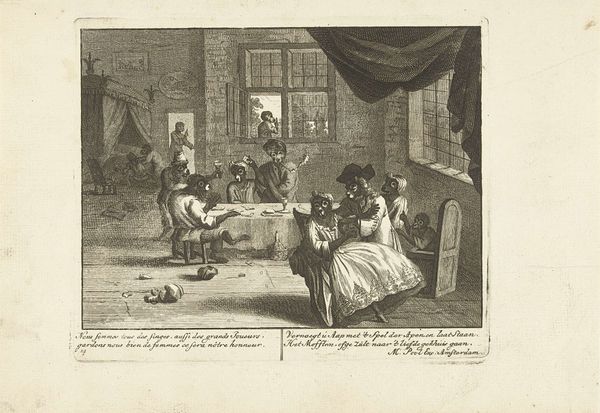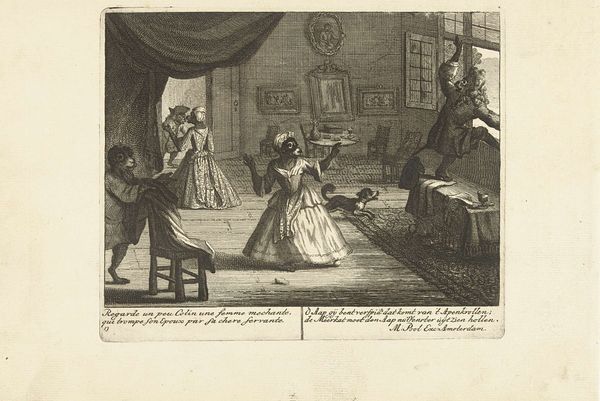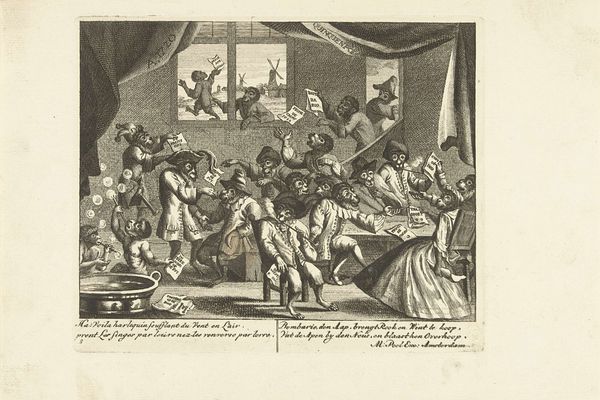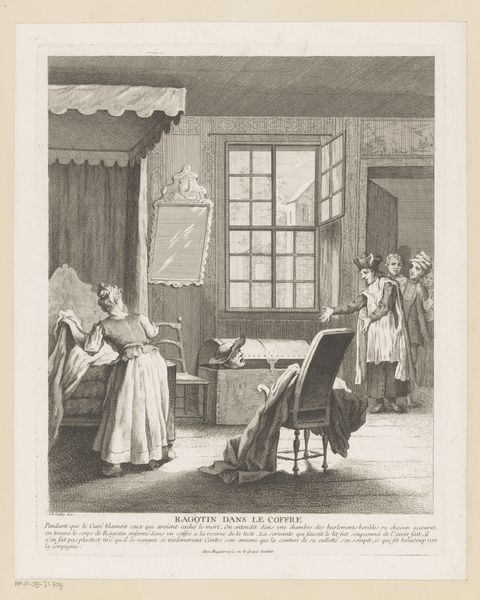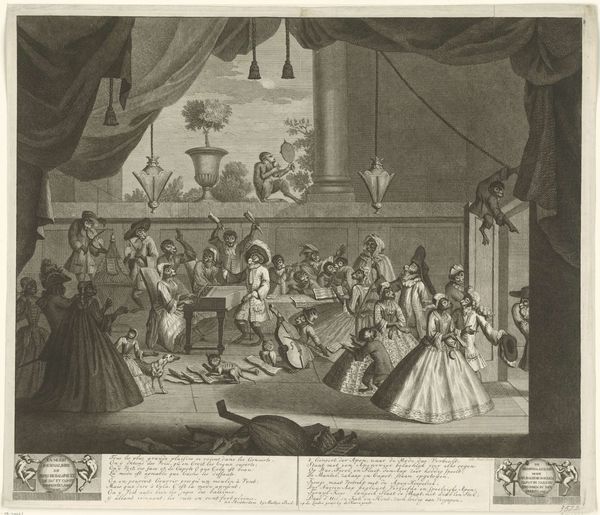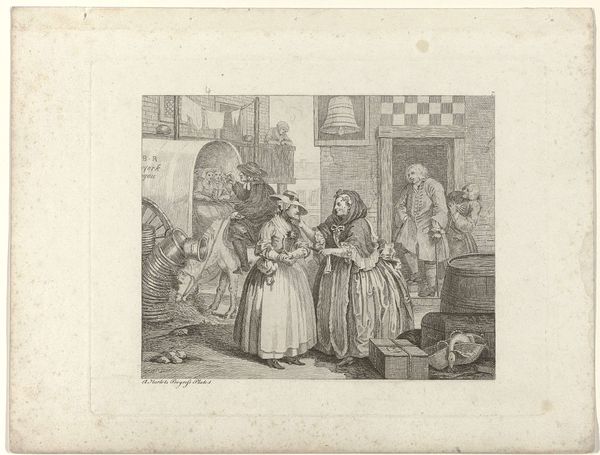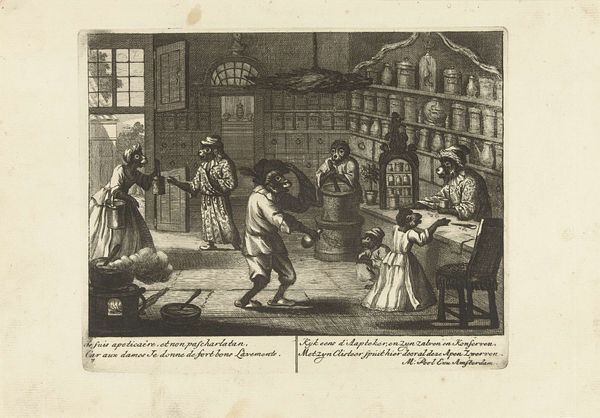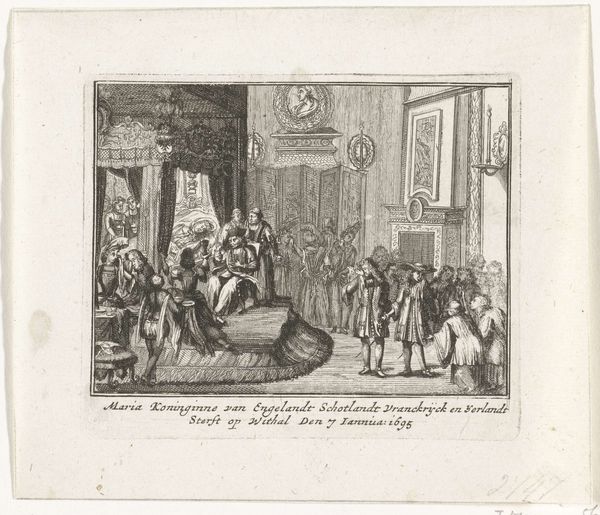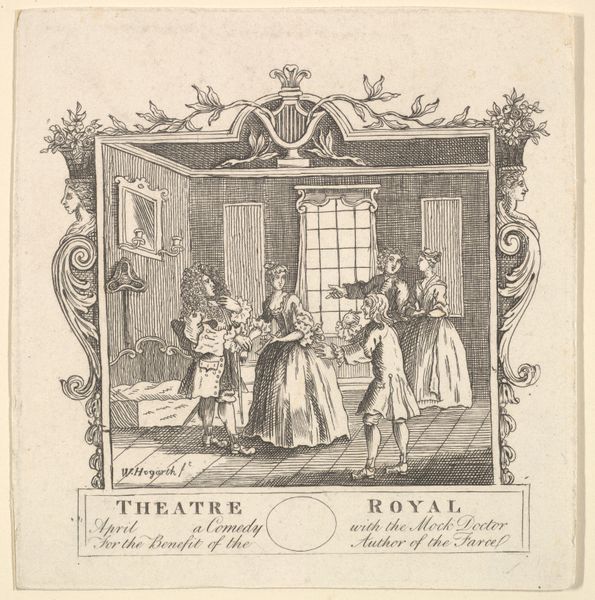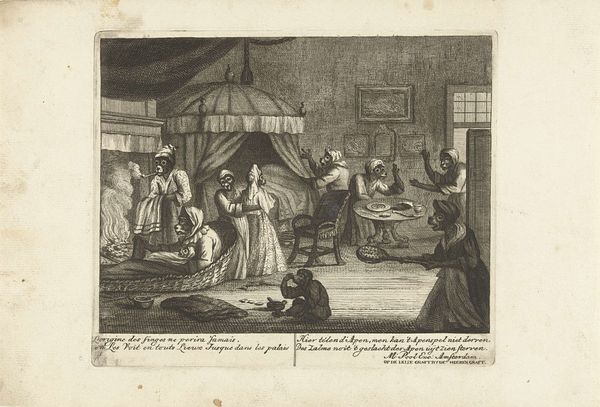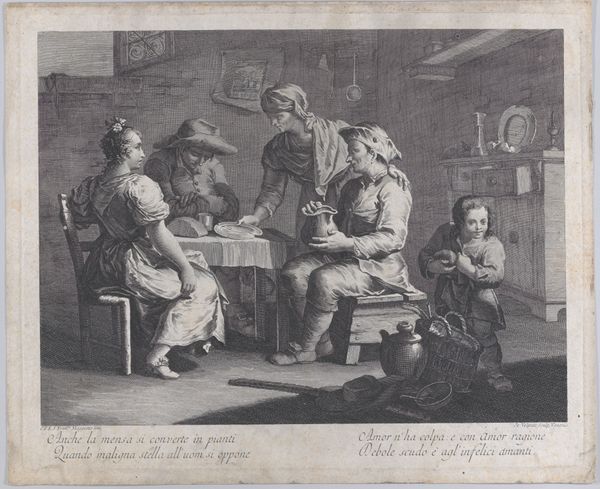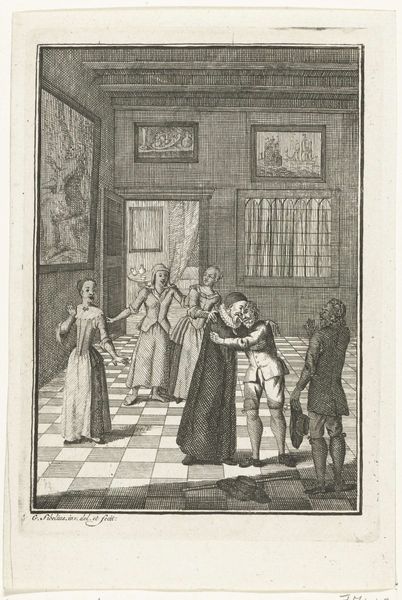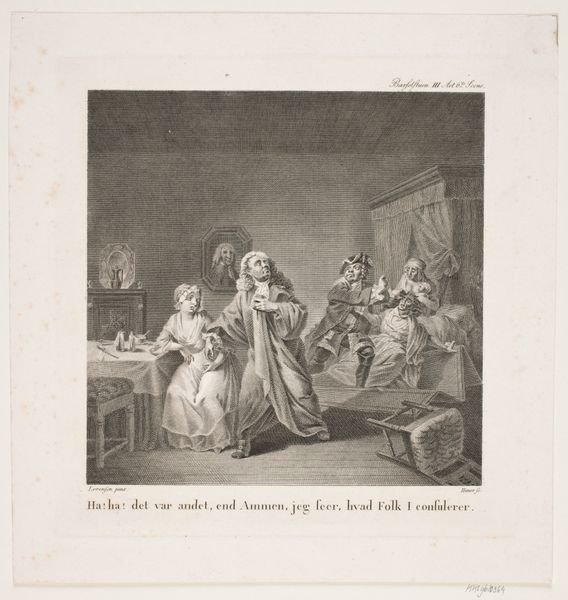
print, etching
#
portrait
#
baroque
# print
#
etching
#
genre-painting
Dimensions: height 165 mm, width 205 mm
Copyright: Rijks Museum: Open Domain
Curator: Matthijs Pool’s etching, "Apen die koffiedrinken," or "Monkeys Drinking Coffee," from around 1720, is certainly peculiar. It's currently housed in the Rijksmuseum. Editor: Peculiar indeed! My initial impression is… unsettling, almost a distorted mirror reflecting societal habits. The composition feels claustrophobic, the figures cramped into this bustling scene. Curator: Notice the artist's deft handling of line? The dense network of etched lines creates a striking contrast between light and shadow, defining form and texture. The composition, while seemingly chaotic, has a clear structural logic. The table acts as a central anchor, drawing the viewer's eye to the activities surrounding it. Editor: The imagery hits harder than the lines. Monkeys dressed as aristocrats sipping coffee… the immediate symbolic connection is satirical. Could Pool be commenting on the excesses or absurdities of human social rituals, the new fashion of drinking coffee at the time? Curator: Absolutely. And let’s examine the depth created here –the artist uses perspective, though not perfectly, which serves to give it a playful character rather than being completely realistic. Editor: And what about the room itself? It almost appears as a stage, emphasizing artifice. Coffee, introduced in the late 17th century, became tied to commerce, trade routes, colonial ambitions. Here, are the monkeys inadvertently symbolizing colonial exploitation and dispossession, all under the guise of fashion? Curator: It's worth noting the various gestures throughout, and even though this etching does not possess color per se, we still see how the value gradations convey differences in form and even material. Editor: It is a thought-provoking, somewhat grotesque spectacle. Seeing it, you can not unsee the loaded symbolism beneath the surface. The combination of recognizable human behaviours being emulated by apes, it’s not easily ignored! Curator: I agree. Ultimately, I appreciate its ability to evoke intellectual and analytical examination using, principally, only tone. Editor: For me, it will stick with me for how it prompts questions of cultural appropriation and its lingering impacts, long after our viewing is over.
Comments
No comments
Be the first to comment and join the conversation on the ultimate creative platform.
